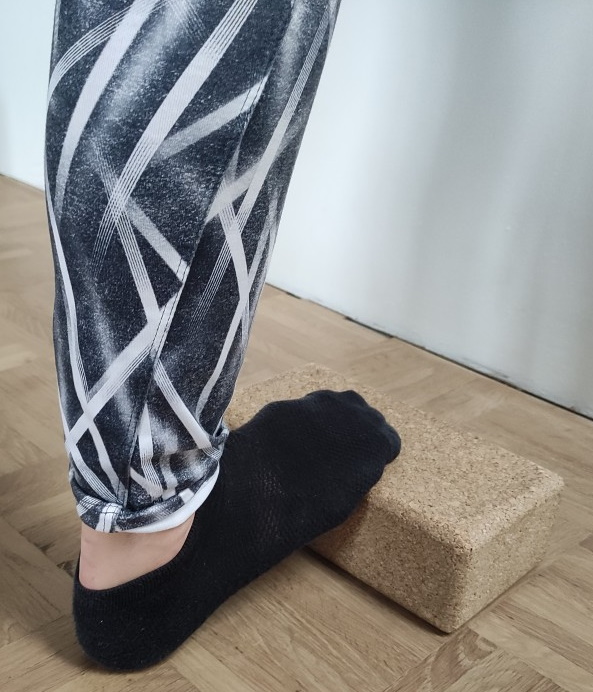yogabook / functional exercises / soleus stretching on the block

Feedback: We would love to hear what you think about this description, give us feedback at:
postmeister@yogabook.org
last change: 30.12.2018
Name: soleus stretching on the block
Level: A
- Klassifizierung
- Kontraindikation
- Wirkungen
- Vorbereitung
- Nachbereitung
- abgeleitete asanas
- ähnliche asanas
- Diagnostik
- Anleitung
- Details
- Varianten
Contents
Classification
classic: functional exercise
physiological: excellent posture for stretching the soleus by maximising dorsiflexion of the ankle when the gastrocnemius is unloaded
Contraindication
Freshly operated tears of the Achilles tendon do not tolerate powerful wide dorsiflexion. A ventral form of OSG-impingement can lead to pain in the anterior ankle area.
Wirkungen
- (851) Dehnung der monoartikulären Wadenmuskulatur (Soleus)
Preparation
Follow-up
derived asanas:
similar asanas:
Effect on the soleus: malasana, utkatasana.
Diagnostics (Nr.)
Variants
Instructions
- Place the ball of the right foot on a block, leave the heel on the floor.
- Place the left foot at a sufficient distance (about leg-width) to the back and slightly offset to the left.
- Bend the right knee along the centre line of the foot as far as possible.
Details
- Keep the front leg in a vertical plane, i.e. do not rotate the lower leg in the knee joint in relation to the thigh. To do this, measure the lateral offset of the left foot so that the pelvis can be held with its longitudinal axis parallel to the front leg.
- Bend the front knee as far as possible. It should reach as far forwards as possible, but definitely further than the heel.
- The posture should stretch the soleus slightly above the achilles tendon. If the achilles tendon itself is too noticeable, achillodynia must be checked.
- The flexion angle of the anterior knee should exceed 20-30° so that the dorsiflexion does not proportionally stretch the gastrocnemius.
- In some cases, in addition to or instead of the distension sensation of the soleus or a sensation in the achilles tendon, a slightly sharp sensation in the anterior ankle, which may be due to OSG-impingement, as is more common in footballers, for example.
- The back foot can be placed at a slight angle as in the 1st warrior position or straight if this is considered stable enough. In both cases, however, the back leg should be twisted in and stretched out.
